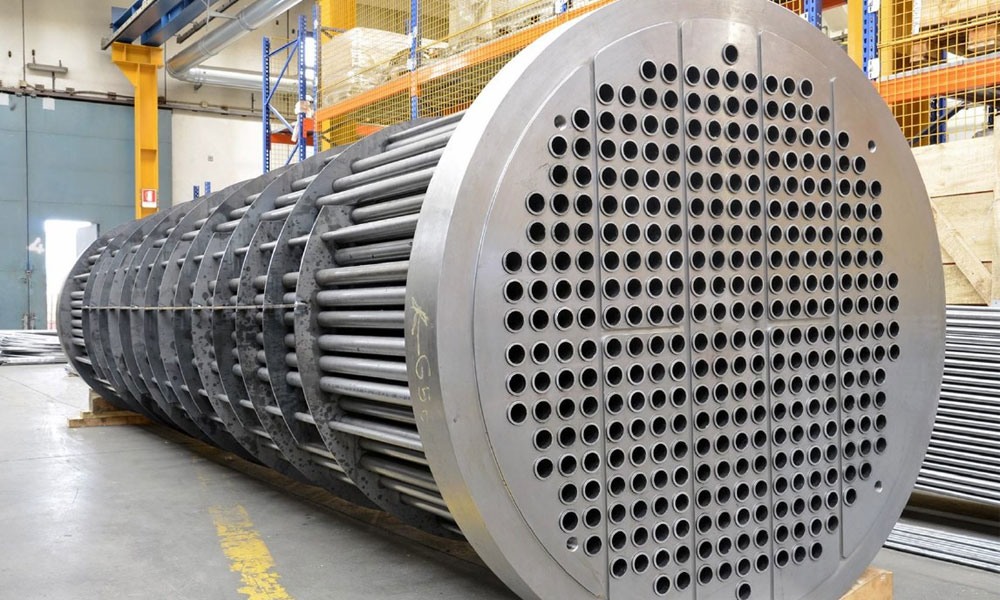In the dynamic landscape of industrial equipment, the choice of heat exchangers is a critical decision that directly impacts overall system efficiency. Among the various options available, the microchannel heat exchanger has emerged as a preferred solution, offering a multitude of advantages that address the unique challenges faced by industries. In this article, we will delve into the reasons why microchannel heat exchangers are gaining prominence in industrial applications.
Compact Design for Optimal Space Utilization
One of the primary reasons industries are turning to microchannel heat exchangers is their compact design. Unlike traditional heat exchangers, microchannel variants feature a network of small channels, often on the micrometer scale. This design allows for a higher surface area-to-volume ratio, enabling the creation of smaller and lighter heat exchangers. In industries where space optimization is a critical consideration, the compact design of microchannel heat exchangers becomes a significant advantage, facilitating versatile integration into various industrial systems.
Enhanced Heat Transfer Efficiency
Microchannel heat exchangers excel in promoting turbulent flow within the small channels, leading to more effective convective heat transfer between fluid streams. This enhanced efficiency is a key factor in their widespread adoption. In applications where rapid and precise temperature control is essential, microchannel heat exchangers prove to be invaluable. The efficient heat transfer capabilities contribute to improved performance and reliability, addressing the thermal management challenges faced by industries.
Reduced Material Usage and Environmental Impact
The compact design of microchannel heat exchangers not only aids in optimal space utilization but also results in reduced material usage. This reduction has significant implications for both economic and environmental considerations. By minimizing the raw materials required for manufacturing, microchannel heat exchangers contribute to cost savings and align with sustainable practices. Industries are increasingly recognizing the importance of environmental responsibility, and the reduced environmental impact of microchannel heat exchangers makes them an attractive choice.
Improved Thermal Performance Under Extreme Conditions
Microchannel heat exchangers are engineered to handle high heat fluxes and temperature differentials. This robust thermal performance makes them suitable for applications in industries where extreme thermal conditions are commonplace. In aerospace, automotive, and electronics industries, where equipment operates under challenging environments, the ability of microchannel heat exchangers to maintain optimal thermal performance is a decisive factor. This reliability ensures the continued operation of industrial processes even in the face of varying thermal challenges.
Versatility Across Industries
The versatility of microchannel heat exchangers is another compelling reason for their adoption. These heat exchangers find applications across a broad spectrum of industries. In the automotive sector, they play a crucial role in cooling systems for engines and electric vehicle batteries, contributing to improved overall vehicle performance. In electronics, microchannel heat exchangers are employed to manage heat generated by electronic components, ensuring the longevity and reliability of electronic devices.
Energy Savings in HVAC Systems
The advantages of microchannel heat exchangers extend to heating, ventilation, and air conditioning (HVAC) systems. Their compact design and enhanced heat transfer capabilities contribute to energy savings in residential and commercial settings. The improved efficiency of microchannel heat exchangers leads to reduced energy consumption, making them a cost-effective solution for HVAC applications.
Key Role in Renewable Energy Systems
Microchannel heat exchangers play a pivotal role in various renewable energy systems, including solar thermal and geothermal applications. Their efficiency in transferring heat is crucial for harnessing and utilizing sustainable energy sources. The adaptability of microchannel heat exchangers to handle thermal fluctuations makes them integral components in the transition toward cleaner and more sustainable energy solutions.
Conclusion
In conclusion, the adoption of microchannel heat exchangers in industrial equipment is driven by their compact design, enhanced heat transfer efficiency, reduced material usage, and versatility across industries. These heat exchangers are not merely components but strategic solutions that address the evolving needs of industries for optimal thermal management. As industries continue to prioritize efficiency, sustainability, and reliability, the choice of microchannel heat exchangers is poised to grow, contributing to advancements in industrial processes and systems.

